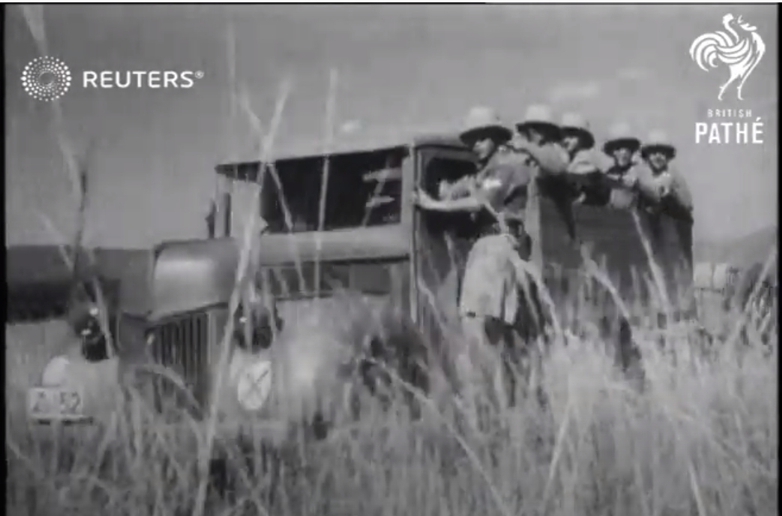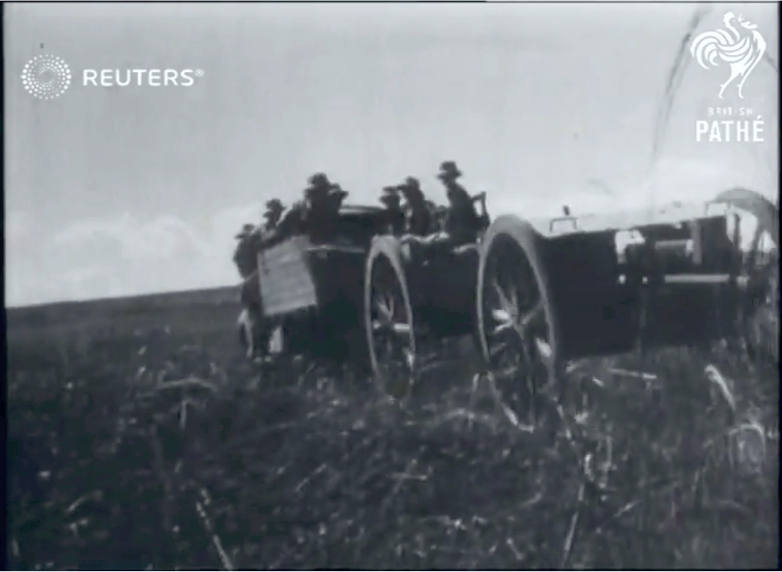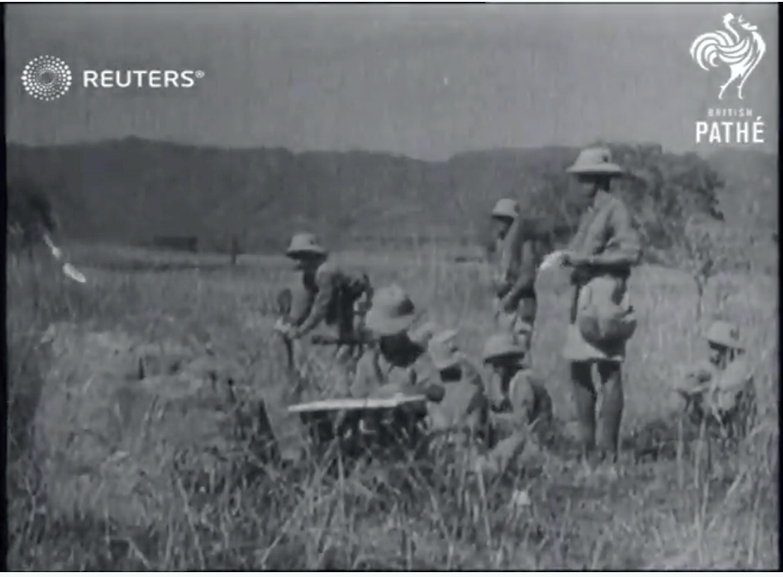5th Field Battery, R.A., The Rangoon Field Brigade, B.A.F.
In September 1940, the four 18-pounder field guns of The Rangoon Field Brigade were used to equip the newly formed 5th Field Battery, Royal Artillery, Burma Auxiliary Force. This new battery remained as part of The Rangoon Field Brigade. It left for Maymyo on 1st June 1940. On 8th February 1941 the unit strength was 23 Officers and 476 Other Ranks. During December 1941, ‘B’ Troop of the Battery was formed but did not receive any guns. On 27th December, ‘B’ Troop sent a detachment of one British Officer and 20 British Other Ranks with six Austrian 65mm mountain guns to Mergui for beach defence and one N.C.O. and six other ranks with two 65mm guns to Tavoy, also for beach defence. The balance of "B" Troop of the 5th Field Battery was given eight 77mm Italian field guns for use in the anti-tank role. These were handed over to an Indian antitank battery on 17th February 1942.[1]
In December 1941, the 5th Field Battery was in the Southern Shan States near Taunggyi, at Takaw, with the 2nd Battalion, King’s Own Yorkshire Light Infantry, under command of the 1st Burma Infantry Brigade. Late in January 1942, the 5th Field Battery moved south to join the 17th Indian Infantry Division. By 8th February, one section of two guns was at Thaton, supporting the 46th Indian Infantry Brigade in the anti-tank role. When the 46th Brigade withdrew behind the Bilin River on the night of 14th/15th February, the section of the 5th Field Battery came under the command of the 16th Indian Infantry Brigade, which remained in the defence of the Bilin River line.[2] The battery took part in the defence of the approaches to the Sittang Bridge, on the east bank of the river near Mokpalin. The guns were lost following the premature destruction of the bridge.
There is reference to a Training Troop, 5th Field Battery being in Rangoon during February 1942. When the Rangoon-based elements of The Rangoon Field Brigade left the city for Prome on 23rd February 1942, the Training Troop, consisting of five Officers, one Warrant Officer and 60 Other Ranks, accompanied them. Upon reaching Prome, the men were then sent on to Yenangyaung where they arrived on 25th February and went into billets. On 28th February, Signaller Saw Aye Maung, who had served with the active element of the 5th Field Battery, reported from the ‘Sittang Front’.[3]
There is newsreel footage from after the fall of Moulmein which includes film of what is most likely a section of the 5th Field Battery, B.A.F. The newsreel shows the arrival of British, Indian and Burma troops in the Martaban area, directly across the Salween River from Moulmein. Two 18-pounder field guns with limbers can be seen, towed by light trucks. A forward observation post is established, and the two guns brought into action ‘on the Japanese target’. The guns appear to be sited to fire at targets near Moulmein across the Salween River, firing over the railway line running down into Martaban from the north.
The newsreel was produced by Gaumont British News (Reuters, now owned by British Pathé) and is entitled ‘The Far East Front; Myanmar; Chinese Troops in Action’. See: https://www.britishpathe.com/video/VLVAACU8Q472N0P25QDFD4NODD88S-MYANMAR-BURMESE-TROOPS-SEE-ACTION or https://www.youtube.com/watch?v=IK-0Ai3KjPY
31 December 2021




